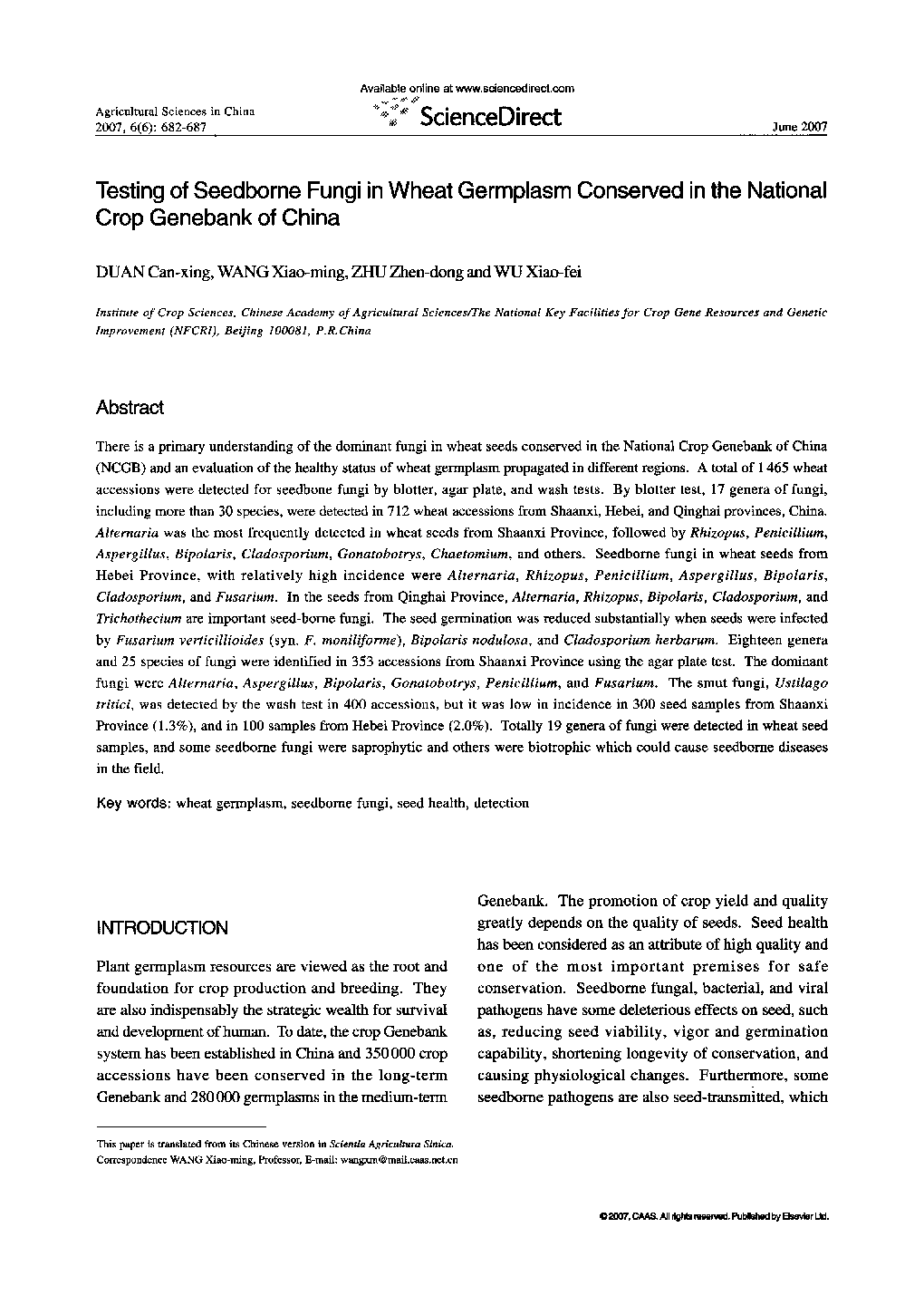| کد مقاله | کد نشریه | سال انتشار | مقاله انگلیسی | نسخه تمام متن |
|---|---|---|---|---|
| 4490859 | 1317793 | 2007 | 6 صفحه PDF | دانلود رایگان |

There is a primary understanding of the dominant fungi in wheat seeds conserved in the National Crop Genebank of China (NCGB) and an evaluation of the healthy status of wheat germplasm propagated in different regions. A total of 1465 wheat accessions were detected for seedbone fungi by blotter, agar plate, and wash tests. By blotter test, 17 genera of fungi, including more than 30 species, were detected in 712 wheat accessions from Shaanxi, Hebei, and Qinghai provinces, China. Alternaria was the most frequently detected in wheat seeds from Shaanxi Province, followed by Rhizopus, Penicillium, Aspergillus, Bipolaris, Cladosporium, Gonatobotrys, Chaetomium, and others. Seedborne fungi in wheat seeds from Hebei Province, with relatively high incidence were Alternaria, Rhizopus, Penicillium, Aspergillus, Bipolaris, Cladosporium, and Fusarium. In the seeds from Qinghai Province, Alternaria, Rhizopus, Bipolaris, Cladosporium, and Trichothecium are important seed-borne fungi. The seed germination was reduced substantially when seeds were infected by Fusarium verticillioides (syn. F. moniliforme), Bipolaris nodulosa, and Cladosporium herbarum. Eighteen genera and 25 species of fungi were identified in 353 accessions from Shaanxi Province using the agar plate test. The dominant fungi were Alternaria, Aspergillus, Bipolaris, Gonatobotrys, Penicillium, and Fusarium. The smut fungi, Ustilago tritici, was detected by the wash test in 400 accessions, but it was low in incidence in 300 seed samples from Shaanxi Province (1.3%), and in 100 samples from Hebei Province (2.0%). Totally 19 genera of fungi were detected in wheat seed samples, and some seedborne fungi were saprophytic and others were biotrophic which could cause seedborne diseases in the field.
Journal: Agricultural Sciences in China - Volume 6, Issue 6, June 2007, Pages 682-687